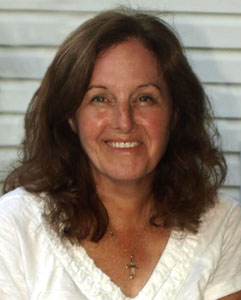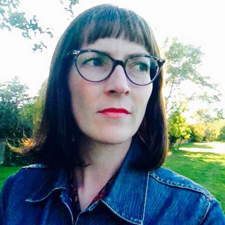On Archaeology and the Hereafter: Stephanie Harrington in Conversation with Jennifer Williamson

UVic MFA candidate Stephanie Harrington talks with Jennifer Williamson, winner of the 2016 Open Season Award for Creative Nonfiction with her memoir, “Light Year.” The two discuss the metaphor of outer space, transformation and limitation, and the memoir's use of humour.
Read what Open Season CNF judge Fiona Tinwei Lam had to say about Williamson's winning memoir.
Congratulations on winning the Open Season award for CNF. There’s a strong sense of impermanence in “Light Year.” For example, you write about your career as an archaeologist: “I sifted through the remnants of other people’s lives, piecing together the dimensions of their living spaces, astonished how little remains and how random its preservation.” How did your experience in archaeology contribute to the writing of this essay, specifically to the idea of impermanence?
To touch an artifact is to connect with a person, a life, a culture. As an archaeologist you wonder about the story behind the artifact and you are very aware of the passage of time. Civilizations rise and fall, nothing material is permanent. In western Canada artifacts are relatively sparse, despite the rich culture of aboriginal people. One day, someone might dig up a relic from my life. I wonder how significant it might appear, or what insights it might offer.
Outer space is a unifying metaphor in this work. Your party guests are “shooting stars that have crossed my path,” the “universe is expanding, but my world is shrinking,” your husband Nick’s eyesight is so poor he cannot see the stars. How did your decision to use this metaphor come about? Did it emerge from the work or did a particular incident spark the idea?
It developed as I wrote the essay. The cosmos, with its cycles and mysteries, seemed a fitting metaphor for life and death. It also illustrates the enormity of the concept of a "hereafter".
The tension between transformation and limitation is a real strength in “Light Year.” The line: “There is no time to reinvent ourselves,” stopped me. What a profoundly sad and difficult thought. Judge Fiona Lam says, “the piece ends as it begins, moving toward the transcendent and sublime.” “Light Year” could be interpreted as more of an elegy. What do you hope readers come away with from this essay?
Intellectually I know aging is a natural process, and should be accepted gracefully. But witnessing the physical and mental loss associated with aging is very sad. So yes, Light Year is a lament for lost youth and the bravado that comes with strength and opportunity. I think many readers will identify with my sentiments on aging. However, given that aging is inevitable, it is wise to be grateful for the life we've enjoyed and to leave a positive legacy for the next generation.
Humour is weaved throughout the piece. You write about pacemakers and adult diapers. I laughed aloud when I read: “What if there is a devil? What if he takes me?” How important is humour when writing autobiographical work?
Autobiographical work often probes the dark, scary parts of our lives, so it's important to relieve some of the tension with humour. Being able to laugh at oneself relieves some of the angst for both the writer and the reader.
In terms of characterization, your husband Nick is a good counterbalance to your more melancholy stance. How much liberty do you take when conveying character in creative nonfiction? It’s easy to emphasize (or play down) aspects of your own character, but what responsibility does the CNF writer have to their subjects?
This particular piece was very true to character. I wrote exactly what I was feeling and what I knew my husband's response would be. A creative nonfiction writer has minimal wriggle room when it comes to plot and characterization. Too much liberty would result in a work of fiction.

Stephanie Harrington
* * * * * * * *









